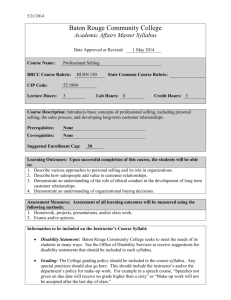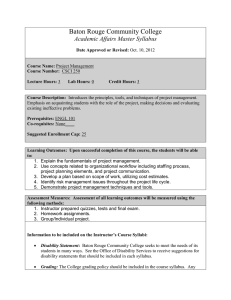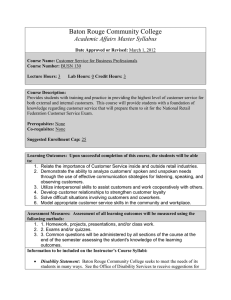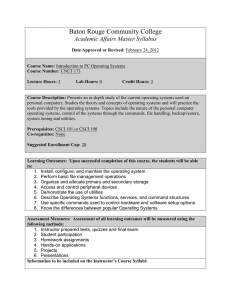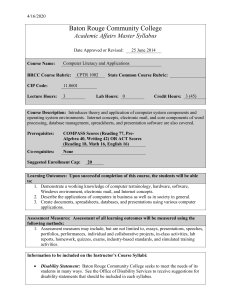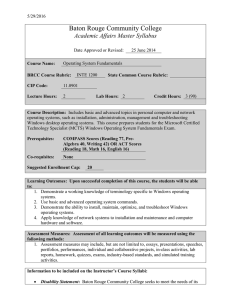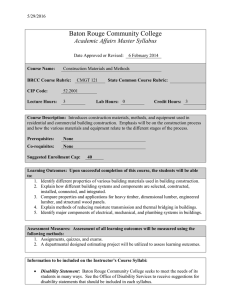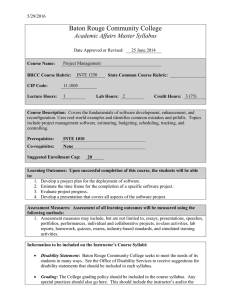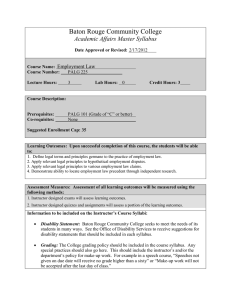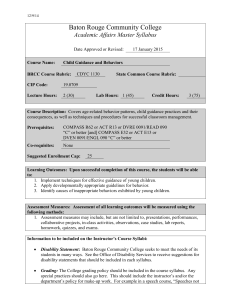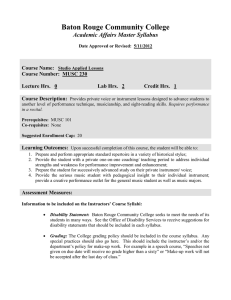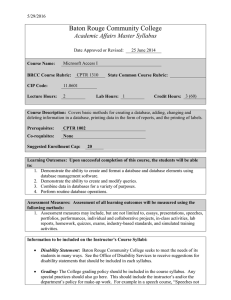BUSN 110 - Baton Rouge Community College
advertisement
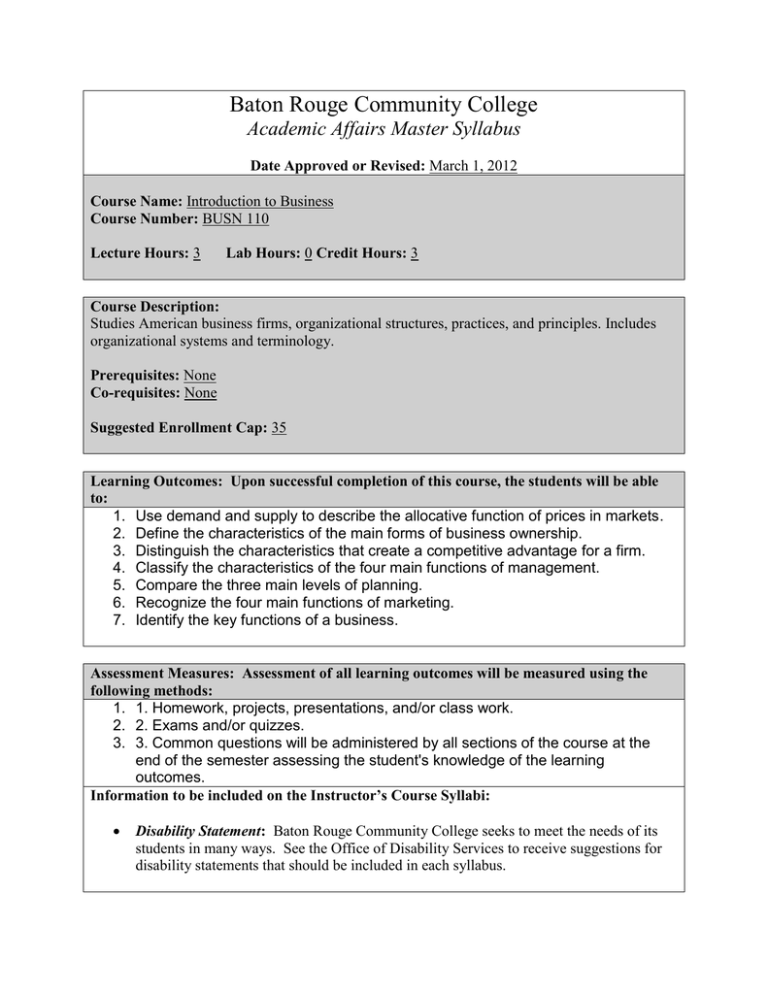
Baton Rouge Community College Academic Affairs Master Syllabus Date Approved or Revised: March 1, 2012 Course Name: Introduction to Business Course Number: BUSN 110 Lecture Hours: 3 Lab Hours: 0 Credit Hours: 3 Course Description: Studies American business firms, organizational structures, practices, and principles. Includes organizational systems and terminology. Prerequisites: None Co-requisites: None Suggested Enrollment Cap: 35 Learning Outcomes: Upon successful completion of this course, the students will be able to: 1. Use demand and supply to describe the allocative function of prices in markets. 2. Define the characteristics of the main forms of business ownership. 3. Distinguish the characteristics that create a competitive advantage for a firm. 4. Classify the characteristics of the four main functions of management. 5. Compare the three main levels of planning. 6. Recognize the four main functions of marketing. 7. Identify the key functions of a business. Assessment Measures: Assessment of all learning outcomes will be measured using the following methods: 1. 1. Homework, projects, presentations, and/or class work. 2. 2. Exams and/or quizzes. 3. 3. Common questions will be administered by all sections of the course at the end of the semester assessing the student's knowledge of the learning outcomes. Information to be included on the Instructor’s Course Syllabi: Disability Statement: Baton Rouge Community College seeks to meet the needs of its students in many ways. See the Office of Disability Services to receive suggestions for disability statements that should be included in each syllabus. Grading: The College grading policy should be included in the course syllabus. Any special practices should also go here. This should include the instructor’s and/or the department’s policy for make-up work. For example in a speech course, “Speeches not given on due date will receive no grade higher than a sixty” or “Make-up work will not be accepted after the last day of class.” Attendance Policy: Include the overall attendance policy of the college. Instructors may want to add additional information in individual syllabi to meet the needs of their courses. General Policies: Instructors’ policy on the use of things such as beepers and cell phones and/or hand held programmable calculators should be covered in this section. Cheating and Plagiarism: This must be included in all syllabi and should include the penalties for incidents in a given class. Students should have a clear idea of what constitutes cheating in a given course. Safety Concerns: In some programs this may be a major issue. For example, “No student will be allowed in the safety lab without safety glasses.” General statements such as, “Items that may be harmful to one’s self or others should not be brought to class.” Library/ Learning Resources: Since the development of the total person is part of our mission, assignments in the library and/or the Learning Resources Center should be included to assist students in enhancing skills and in using resources. Students should be encouraged to use the library for reading enjoyment as part of lifelong learning. Expanded Course Outline: I: THE BUSINESS ENVIRONMENT. A. Business Now: Change is the Only Constant. B. Economics: The Framework for Business. C. The World Marketplace: Business without Borders. D. Business Ethics and Social Responsibility: Doing Well by Doing Good. E. Business Communication: Creating and Delivering Messages that Matter. II: CREATING A BUSINESS. A. Business Formation: Choosing the Form that Fits. B. Small Business and Entrepreneurship: Economic Rocket Fuel. III: FINANCING A BUSINESS. A. Accounting: Decision Making By the Numbers. B. Finance: Acquiring and Using Funds to Maximize Value. C. Financial Markets: Allocating Financial Resources IV: MARKETING A BUSINESS. A. Marketing: Building Profitable Customer Connections. B. Product and Promotion: Creating and Communicating Value. C. Distribution and Pricing: Right Product, Right Person, Right Place, Right Price. V: MANAGING A BUSINESS. A. Management Motivation and Leadership: Bringing Business to Life. B. Human Resource Management: Building a Top-Quality Workforce. C. Managing Information and Technology: Finding New Ways to Learn and Link. D. Operations Management: Putting it All Together.
